Understanding Car Body Types
With more than 400 different models available in today's car market, drivers have more choice than ever before when it comes to deciding which vehicle to choose as their next lease car.
In this handy guide, Nationwide Vehicle Contracts talks you through the different types of car body styles available, including the difference between car body styles and how to find the right car body type for you.

What is a car body type?
A car body type is a categorisation of a vehicle based on its design, shape and space. Body types are usually established by a car's ‘body style’, which can vary from a tall and boxy (SUV), low and sleek (coupe) or somewhere in-between (hatchback).
In Europe, most cars are divided into two-box and three-box body styles, with up to four pillars. A pillar is a post or support around the vehicle’s windows. For example, a Saloon or Hatchback body type usually has three pillars, while an SUV or Estate has four pillars.
A car's body type not only helps to differentiate between the different types of cars on the market but also gives the driver an idea of what to expect from the vehicle when it comes to style, space and interior features.
What are the different car body types?
Most vehicles fall into one of 10 different car body types:
It is worth noting that some vehicles don't always fit neatly into any category, often crossing over between styles, such as the BMW X4 "four-door coupe SUV".
Different car body types serve different purposes. For example, MPVs and SUVs are known for their space, making them popular with growing families who are looking for a vehicle that can carry up to seven people, as well as their luggage. City cars and superminis, on the other hand, are small and compact, making them ideal for drivers who need to negotiate busy city streets and tight parking spaces.
“A car body type is a categorisation of a vehicle based on its design, shape and style.”

How do I find the right car body type for me?
To decide which car body type is best for you, consider your current lifestyle and what you want from a car. Things to consider include:
- Is exterior style important to you?
- How many passengers do you intend to carry?
- Do you need easy access to the rear seats?
- How big does the boot need to be?
- Will you be mostly driving around town and cities?
- Do you need off-road capability?
For most families, space (both inside the cabin and in the boot) is a top consideration, so a larger vehicle like an SUV or an MPV is a suitable choice.
Younger drivers looking to lease their first car may want to consider something small that's cheap to insure, such as a city car or supermini.
A company car driver, on the other hand, may want a vehicle that's comfortable to drive and has low BIK rates, so a hatchback or estate may be an affordable choice.
While other factors such as price, fuel type, performance and safety all play their part in the car buying decision, choosing a car that's right for you in terms of space and style is as equally important so don't rush this stage. Take your time, consider all your options and pick a vehicle that's right for you.
What are the most popular UK car body types?
To help you choose the type of car that’s right for you, let‘s take a closer look at the different body types on the market, starting from the smallest.
What is a City Car?
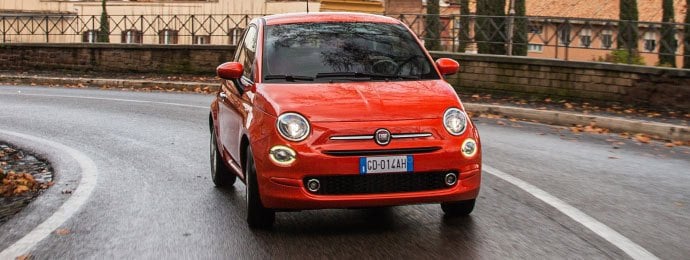
A city car is the smallest type of car on the market and, as the name suggests, is designed for city driving. Available in either three or five-door form, a city car is shorter than a typical subcompact car and falls into the A-segment group, the smallest of the European segments for passenger cars.
Thanks to their compact size, city cars are very easy to manoeuvre, making them ideal for negotiating busy city streets or tight parking spaces. Inside, automotive manufacturers have also pushed cabin size to its limits, moving the wheels to the very edge of the chassis to open up more space on the inside. This, along with careful application of soft-feel materials and generally high specs, make most city cars a comfortable place to be, even in traffic jams.
If you’re on a strict budget, the city car is your best friend, as most have excellent fuel efficiency, making them one of the most economical car body styles available. The smaller 1.0-litre engines deliver nippy performance whilst also being cheaper on road tax and insurance. This makes them particularly popular with young professionals looking for a compact car to get to work, or first-time drivers looking for a vehicle with cheap car insurance.
There are a great variety of city cars currently available to buy or lease in the UK, from the popular Fiat 500 and Kia Picanto, to the Hyundai i10 and the Toyota Aygo. View our latest city car lease offers, all with free mainland GB delivery, road tax and breakdown recovery included in the price.
What is a Supermini?
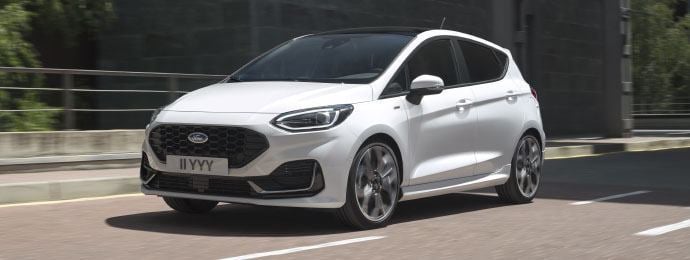
Slightly larger than a city car but smaller than a family hatchback, a supermini is a small car which falls into the B-segment, the second smallest of the European segments for passenger cars. Initially available in three-door form, this stylish small car has become increasingly popular over the past few years, with five-door options now available from most manufacturers, increasing its appeal and practicality.
Relatively small in size, most notably towards the rear end where these cars tend to have much smaller boots than family hatchbacks, superminis are popular because they tend to offer great value for money. Not only are they cheap to run, reliable and practical, but they also offer a fun driving experience thanks to their compact body size and nippy engines.
Inside, a supermini allows for more legroom for rear passengers than city car thanks to the longer distance between the front and rear wheels, but if you’re after a decent sized boot, you’ll need to opt for a hatchback or larger to get an increased amount of space. Engine options aren’t bad either, with a range of performance superminis, such as the Ford Fiesta ST, available for those who want more power, and smaller powertrain options for those who prefer economy over speed.
Whether you’re a young professional looking for a stylish motor with low running costs, or an experienced motorist looking for something simple to get you from A to B, superminis offer great value for money without compromising on style or substance
There are currently a great variety of superminis currently available to buy or lease in the UK market, including the nation’s best-selling car, the Ford Fiesta, as well as other rivals including the Renault Clio, Vauxhall Corsa, Volkswagen Polo and Peugeot 208.
What is a Hatchback?
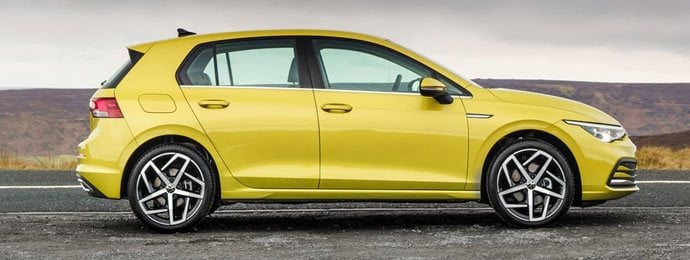
Available in a range of sizes, from small runarounds to larger family-sized cars, the hatchback is the UK's most popular body style, falling into the C-segment group.
Hatchbacks are defined by their 'two-box' design, where there are separate box areas for the engine and then the cabin, combined with the boot. On a hatchback, the boot and rear window lift as one part, and this is classed as a door. This is why hatchbacks are often referred to as three or five-door cars. Three-door cars are usually a little cheaper than five-door equivalents, but five-doors are ideal if you regularly carry passengers in the back seats.
Hatchbacks are great for space; all adults have plenty of headroom and, if you slide the front seats back on their runners, there are loads more legroom. The average family hatchback has a boot that's around 400 litres in size, an adequate amount of space for a weekly shop and a child's buggy. You can also fold the rear seats down to create a larger loading space if required.
Hatchbacks cater for a range of drivers, from young professionals to growing families as they are reliable, spacious enough for both adults and children, are easy to park, cheap to run, and have a great safety rating. Some well-known hatches on the market include the Ford Focus, Volkswagen Golf, SEAT Ibiza and Toyota Corolla Hatchback.
What is an MPV?
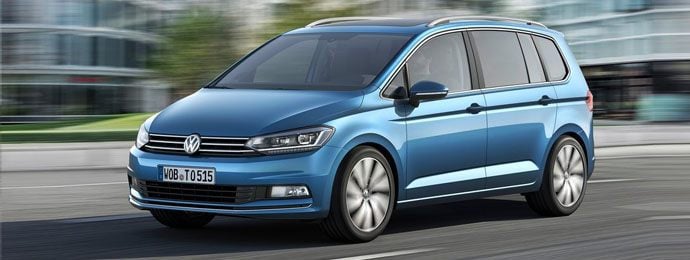
An MPV (Multi-Purpose Vehicle) is a large passenger car known for its space and versatility. Also known as people carriers, an MPV is designed to carry five to seven people in comfort and typically falls into the C-segment of the European segments for passenger cars.
With an MPV, you benefit from a range of possible layouts inside, with seats that slide, fold and can even be removed. Larger models often have seven seats, typically with the rear rows folding flat to the floor to turn the car into something more resembling a van.
MPVs also have a slightly higher driving position than a hatchback, which can give you more visibility and confidence behind the wheel.
MPVs offer a great amount of legroom at the rear, even with the front seats in their most rearward position and its width allows for three passengers to sit comfortably for long periods. Boot space is equally impressive, with the Citroen Grand C4 SpaceTourer offering five individual folding rear seats, including reclining and sliding seats in the second row and a boot with a capacity of up to 704 litres.
Almost every MPV features a choice of petrol and diesel engines, making running costs affordable, despite their size. They are an ideal choice for anyone who needs to transport lots of people and luggage, making them perfect for large families and minicab drivers.
Example MPVs currently available on the market include the Citroen C4 SpaceTourer, Volkswagen Touran, Citroen Berlingo MPV and the Peugeot Rifter.
What is a Saloon?
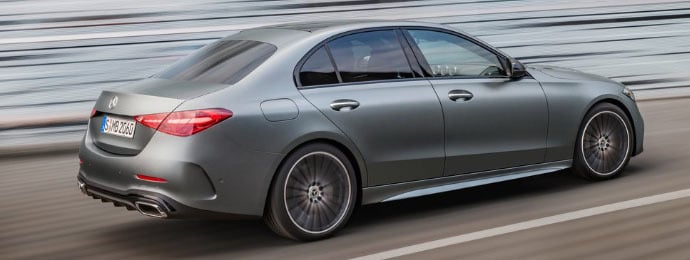
A saloon, also known as a sedan in the US, is a large executive car which falls into F-segment of the European segments for passenger cars.
Often used as a company car or large family car, most saloons come with five doors in a three-box configuration with separate compartments for the engine, the passengers and the cargo. Saloons also have longer wheelbases than conventional family hatchbacks, which results in a more comfortable ride, as well as more legroom in the cabin, especially for rear passengers.
Recognised for their low and sleek design, saloons are typically powered by a range of highly efficient, four-cylinder petrol and diesel engines, which major on delivering excellent fuel economy and performance. If you are a business executive looking for a smart, well-built car to match your professional image or a family of five wanting to travel in style, then a saloon is the perfect choice for you.
There are several saloons currently available to lease including the Audi A4 and A6, the BMW 3 Series, 5 Series and 7 Series and the Mercedes-Benz C-Class and E-Class.
What is an Estate?
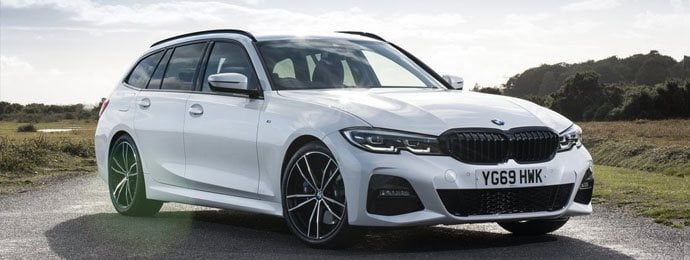
An estate car is a medium to a large-sized car which has a two-box design, with the passenger compartment extending over where the boot would be in a saloon. Estates are practical yet maintain a classy look, with their body style being similar to that of a Saloon, often sharing the same frontal design, but with an extended rear luggage or cargo area.
Estates provide bags of interior space, with ample legroom for adults and even more boot space, making them extremely useful if extra luggage space is needed. Most estate cars come with a diesel engine, as they are designed to drive long distances and make great towing vehicles.
Generally, estate cars are cheaper to buy and run than SUVs. Estate cars sit lower to the ground than MPVs or SUVs, so you don’t have to lift heavy items as far to get them in the vehicle. Depending on your preferred driving style, you may find a lower estate car to be more fun to drive than a high seated SUV.
If you don’t need the seating space of an MPV or don’t fancy the bulky style of an SUV, then an estate car might be perfect for you. Estates remain a popular choice for families, business owners and drivers with pets, as they offer a huge amount of room without compromising on the style or feel of their saloon equivalents.
There are some great looking estate cars currently on the market including the BMW 3 Series Touring, Skoda Superb Estate, Ford Focus Estate, Kia Ceed SW and the Peugeot 308 SW, all available to lease with Nationwide Vehicle Contracts.
What is a Coupe?
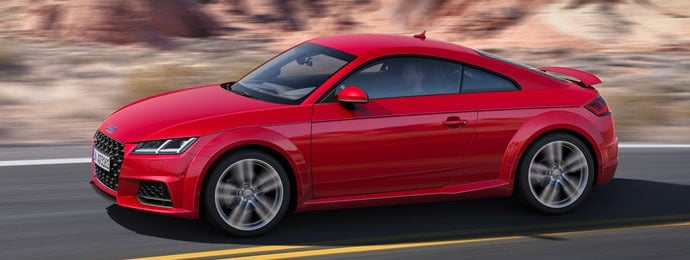
Falling into the F-segment, a coupe is a passenger car with a sleek, sloping rear roofline. Many coupes primarily come as a two-door or three-door model, with two functional seats up front, plus two tiny seats in the back. Now, however, there are several four-door coupes available, making them a more family-orientated vehicle.
The coupé was first applied to horse-drawn carriages for two passengers without rear-facing seats. Today, they are seen as a luxurious passenger vehicle; many marketed towards the sportier end of the spectrum. Coupes are considered desirable cars and manufacturers often charge more for them than an equivalent saloon, because they are great-looking cars, with a sleek, sporty image, and are fun to drive, sitting a little lower to the ground.
A coupe’s boot capacity is respectable as it is relatively deep and will cope with a couple of chunky carry-on bags easily enough without compromising on legroom. They also deliver great performance; with a choice of petrol or diesel engines, and are a popular choice with performance-car enthusiasts because they’re lighter than convertibles.
There are many eye-catching coupes to currently choose from on the market, including the Mercedes-Benz E-Class Coupe, Audi TT, and Lexus RC. If you are looking for a bit of luxury or maximum performance, a coupe is a perfect choice for one or two people who regularly take to the roads for a fun, enthralling adventure.
What is a Crossover?
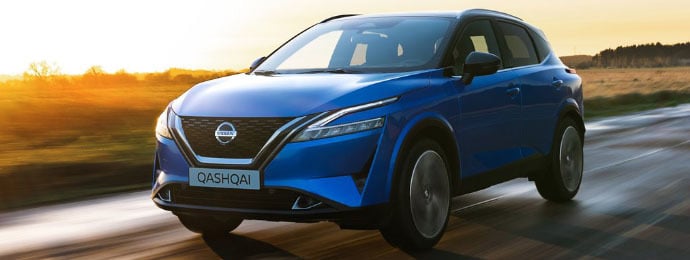
A crossover is a type of Sport Utility Vehicle (SUV) of unibody construction. A crossover combines the features of a hatchback or estate car, with the high ground coverage and style of an SUV. Most crossovers are front-wheel drives, although four-wheel-drive is often available as an option on high spec models.
Many crossovers share practicality features of a truck-based SUV. High-point seating, high ground clearance, optional four-wheel drive and a tall, spacious interior, make them a popular choice with older drivers and young families who find it challenging to access smaller cars.
Crossovers also boast some characteristics of a hatchback or estate cars, such as great handling and good fuel efficiency. Many handle well and are light, providing a smooth ride with pretty good crash protection. Many crossovers also offer a decent range of petrol and diesel engines, with electric and hybrid powertrains also now available.
Crossovers have excellent boot space, with the Volkswagen Tiguan offering 520 litres of luggage space with the back seats in use, or an impressive 615 litres with the rear bench pushed forwards. If you like going on long drives with family or friends or need extra space in the boot, then crossover-style cars are a great option for you as they are practical, affordable, and have great interior comfort.
There is an excellent range of crossovers on the market today including the Volkswagen T-Cross, Seat Arona, Nissan Qashqai, Hyundai Tucson and Renault Captur.
What is an SUV?
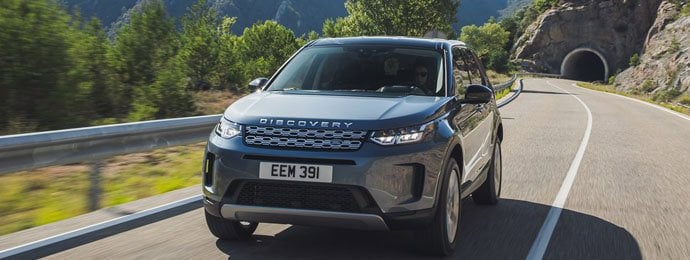
An SUV (Sports Utility Vehicle) is a term traditionally used for cars classified as a light truck but utilised as a family vehicle. An SUV is bigger and taller than an average passenger car thanks to its high roof and seating position, which gives the driver a better view of the road ahead. An SUV also has a raised ground clearance to make driving over rugged terrain easier, and so that the bottom of the car is less at risk of being damaged by rocks and other large bits of debris when driving off-road.
One of the biggest advantages of driving an SUV is the large amount of space. Many SUVs offer the space of a minivan with the comfort and style of a family car. Another advantage of an SUV is the size of the vehicle itself, which provides an aura of safety when driving it.
Yet despite their size, SUVs can still be economical, offering a range of petrol, diesel and hybrid power engines, with smaller SUVs more efficient and cheaper to run than their chunkier counterparts.
An SUV is particularly suited for families who need to transport a large amount of equipment throughout their daily lives or those who are looking for a safe, reliable 4x4 for their adventures in extreme weather conditions. Typical SUVs with four-wheel drive include the Skoda Kodiaq, the Land Rover Discovery and the Jaguar F-Pace.
What is a Cabriolet?
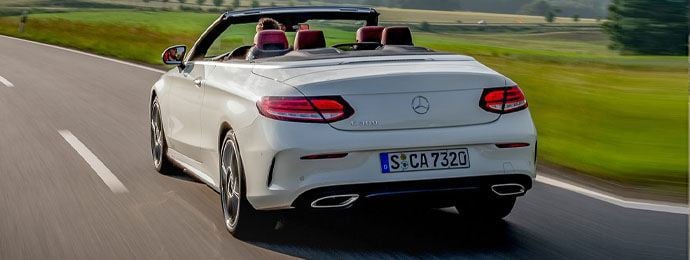
A convertible (or cabriolet) is a car body style with a foldable or retractable roof. While many convertibles have a canvas or vinyl roof (soft top), others have roofs made of plastic, aluminium or steel (hardtop), both making for a great for an open-air driving experience.
Convertibles are usually two-door cars, with spacious front seats but only really enough room in the back for small children or one adult passenger on very short trips. The boot space is reasonable, averaging at around 335 litres, but shrinking to about 280 litres when you want to put the roof down.
With the roof down, convertibles offer better visibility whilst driving as well as maximum headroom, great for taller drivers. Like many new vehicles, the latest computer-controlled engines in a convertible also make the most of every drop of fuel to increase power from small engines to produce more economical models.
Convertibles can be expensive to insure, usually if you choose one with a higher horsepower or one with a hardtop roof which tends to weight more. However, there are cheaper options on the market, including the Smart Fortwo Cabriolet, Fiat 500C and MINI Convertible.
Convertibles can suit everyone, from practical and efficient four-seaters that can easily serve as family cars, to luxurious, elegant grand tourers and even small, sporty two-seaters that are perfect for a sunny weekend.
Thinking of leasing your first lease car? Call Nationwide Vehicle Contracts today on 0345 811 9595 to speak to one of our experienced sales advisers to discuss the options available to you or visit our Young Drivers Leasing resource hub for helpful advice on leasing a car as a new driver.
Guide Information
Originally published: 5th October 2020
Last updated: 1st October 2021
